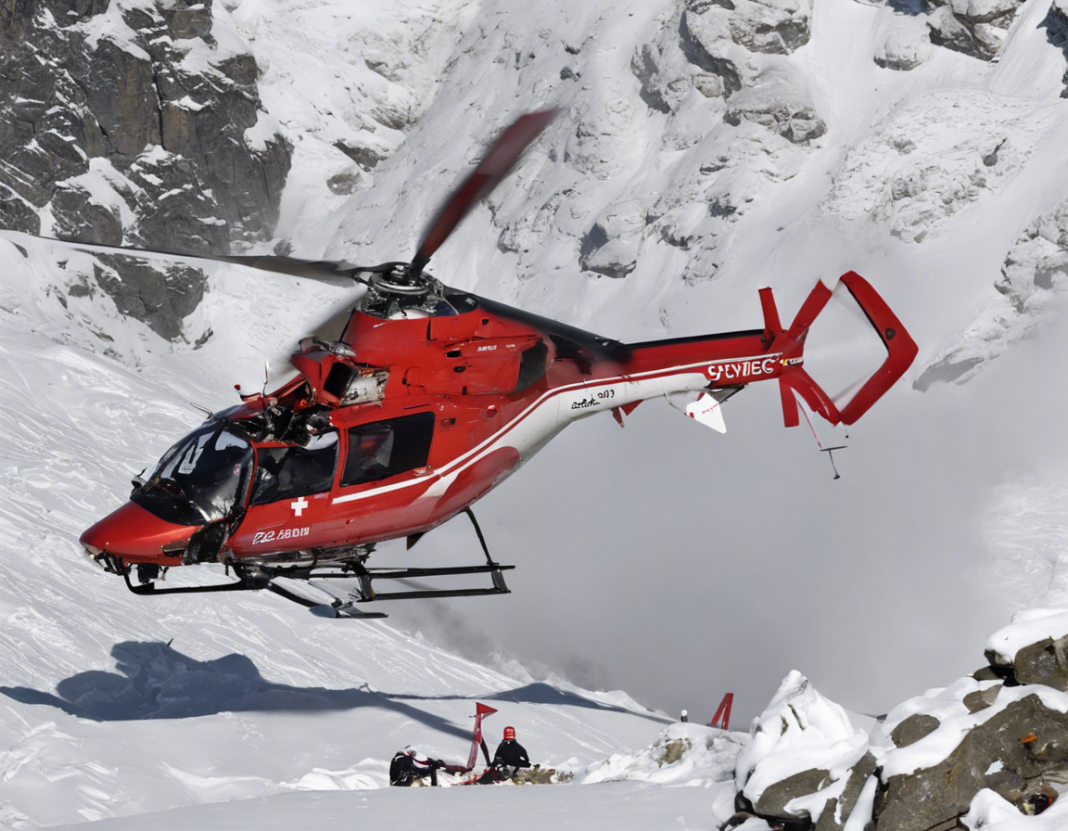The picturesque landscape of the Swiss Alps is known for its stunning beauty and outdoor recreation opportunities. However, on a fateful day, tragedy struck as a helicopter crashed in the region, leading to loss of lives and leaving many questions unanswered. Such incidents, while rare, raise concerns about helicopter safety, regulations, and the risks associated with air travel in mountainous areas.
Understanding the Swiss Alps Helicopter Crash
Helicopters are widely used in the Swiss Alps for various purposes, including tourism, search and rescue operations, and transportation. The rugged terrain and unpredictable weather conditions present unique challenges for pilots navigating through the mountainous region. The recent crash serves as a poignant reminder of the inherent risks involved in flying in such environments.
Helicopter Safety Measures
Helicopter safety is a top priority for aviation authorities and operators worldwide. In Switzerland, the Federal Office of Civil Aviation (FOCA) sets strict regulations and guidelines for helicopter operations to ensure passenger safety. These measures include regular maintenance checks, pilot training and qualifications, and adherence to safety protocols during flights.
Risks of Flying in Mountainous Areas
Flying in mountainous areas like the Swiss Alps poses specific risks due to factors such as high altitude, rapidly changing weather patterns, and limited landing options in case of emergencies. Pilots need to have specialized training and skills to navigate these challenges effectively and make split-second decisions to ensure the safety of passengers and crew.
Response and Investigations
Following the helicopter crash in the Swiss Alps, emergency response teams were deployed to the site to assess the situation, provide medical assistance, and initiate an investigation into the cause of the accident. The findings of the investigation will help determine the factors that led to the crash and identify any lapses in safety protocols that need to be addressed to prevent similar incidents in the future.
Helicopter Safety Tips for Passengers
- Listen to the Safety Briefing: Pay attention to the pre-flight safety briefing provided by the helicopter crew and follow their instructions during the flight.
- Fasten Your Seatbelt: Ensure that you fasten your seatbelt securely and wear any other safety equipment provided, such as helmets or harnesses.
- Stay Calm and Alert: In case of an emergency, remain calm, listen to the crew’s instructions, and be prepared to follow evacuation procedures if necessary.
- Choose Reputable Operators: Opt for helicopter operators with a track record of safety and reliability, even if it means paying a slightly higher price for your flight.
- Report Safety Concerns: If you notice any safety issues or discomfort during the flight, don’t hesitate to inform the crew or the helicopter company upon landing.
Frequently Asked Questions (FAQs) about Helicopter Safety in Mountainous Areas
1. How common are helicopter crashes in mountainous regions like the Swiss Alps?
Helicopter crashes in mountainous areas are relatively rare but can have serious consequences due to the challenging terrain and weather conditions.
2. What factors contribute to helicopter accidents in mountainous regions?
Factors such as high altitude, unpredictable weather, limited landing options, and pilot error can contribute to helicopter accidents in mountainous areas.
3. How can passengers ensure their safety while flying in helicopters?
Passengers can enhance their safety by following crew instructions, fastening seatbelts, staying calm during emergencies, and choosing reputable operators with a focus on safety.
4. Are helicopter operators in the Swiss Alps subject to strict safety regulations?
Yes, helicopter operators in Switzerland are subject to stringent safety regulations set by the Federal Office of Civil Aviation to ensure compliance with safety standards.
5. What should passengers do in case of an emergency during a helicopter flight?
In the event of an emergency, passengers should remain calm, listen to crew instructions, and be prepared to follow evacuation procedures as directed by the crew.
6. How do helicopter pilots prepare for flying in mountainous areas?
Helicopter pilots undergo specialized training to acquire the skills and knowledge needed to navigate mountainous terrain, deal with adverse weather conditions, and make quick decisions in challenging situations.
In conclusion, the Swiss Alps helicopter crash serves as a stark reminder of the risks associated with flying in mountainous regions and the importance of prioritizing safety in aviation operations. By following proper safety measures, staying informed about regulations, and choosing reputable operators, passengers can help minimize risks and ensure a safer flying experience in breathtaking but challenging landscapes like the Swiss Alps.

